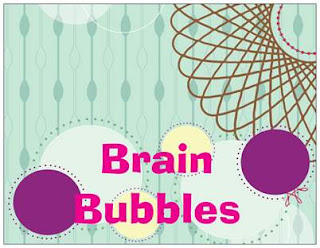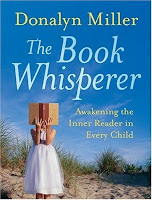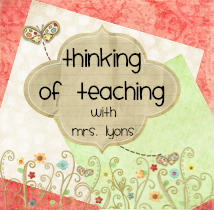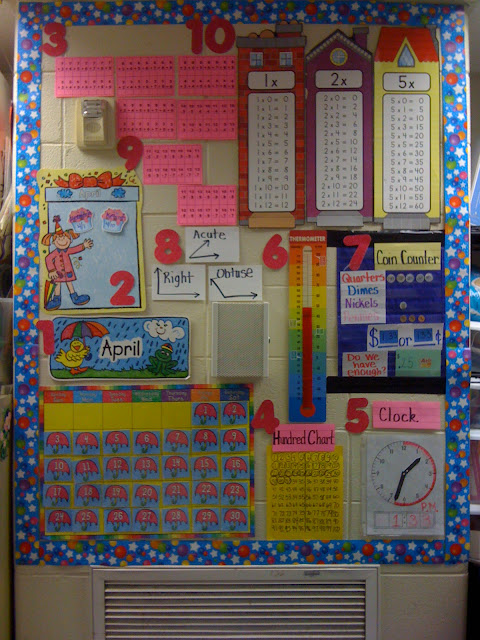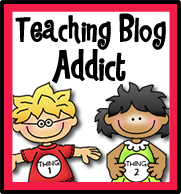Just in time for Christmas, here is a math center activity to build adding of three digit numbers in the form of currency. Check it out below!
Presents Please
Wednesday, November 23, 2011
Tuesday, November 22, 2011
Turkey Money Game
I know it is a little late but, I thought I would share anyway. You can always save until next Thanksgiving.
Here is a money math matching game.
 Click here to download in Google docs.
Click here to download in Google docs.
Here is a money math matching game.

Tuesday, July 26, 2011
Brain Bubbles
Brain Bubbles are designed to be "fun" educational short activities that students can complete when they finish their work.
This was not my original idea, I found the idea on proteacher and adapted the idea to meet my needs. The original idea originated with and Mrs. Sanchez and Mrs. Gold, then Tonya0581 (proteacher name) brought the idea to proteacher. I don't want to take credit, simply share my finished project.
I only spent $5!
Here is what I used, for the bubbles I used dollar tree 10 pack mini storage containers (I used 40) and a $1 ice bucket from the dollar tree for the container. Total cost = $5.00
For my brain bubble questions I used the mailbox brain boosters that come in the magazines each month. I am a subscriber and was able to go online to their member only section and print 8 sheets for language arts and 8 sheets for math.
Here is how I am managing them:
I decided to change them every nine weeks so I created a label that is stuck on each question with the nine weeks and the number. I printed Language Arts questions on Yellow paper and Math on Green (it added some color too!)
I labeled each of the containers with colorful labels (1-40).
I may decide to add more later but, the container I choose only held about 40.
Students will fill out a postcard I made on Vista print to answer their brain bubble question and turn in to me. Here is a picture:
Here are some of my documents:
Brain Bubble Labels (PDF)
Brain Bubble Labels (Word Doc)
Brain Bubble Numbers
Brain Bubble Numbers (Word)
I have listed the websites that explain this idea in more detail.
Here are the links to the original posts:
Proteacher Thread 1
Proteacher Thread 2
Proteacher Thread 3
Proteacher Thread 4
Proteacher Thread 5
Proteacher Thread 6
This was not my original idea, I found the idea on proteacher and adapted the idea to meet my needs. The original idea originated with and Mrs. Sanchez and Mrs. Gold, then Tonya0581 (proteacher name) brought the idea to proteacher. I don't want to take credit, simply share my finished project.
I only spent $5!
Here is what I used, for the bubbles I used dollar tree 10 pack mini storage containers (I used 40) and a $1 ice bucket from the dollar tree for the container. Total cost = $5.00
For my brain bubble questions I used the mailbox brain boosters that come in the magazines each month. I am a subscriber and was able to go online to their member only section and print 8 sheets for language arts and 8 sheets for math.
Here is how I am managing them:
I decided to change them every nine weeks so I created a label that is stuck on each question with the nine weeks and the number. I printed Language Arts questions on Yellow paper and Math on Green (it added some color too!)
I labeled each of the containers with colorful labels (1-40).
I may decide to add more later but, the container I choose only held about 40.
Students will fill out a postcard I made on Vista print to answer their brain bubble question and turn in to me. Here is a picture:
Here are some of my documents:
Brain Bubble Labels (PDF)
Brain Bubble Labels (Word Doc)
Brain Bubble Numbers
Brain Bubble Numbers (Word)
I have listed the websites that explain this idea in more detail.
Here are the links to the original posts:
Proteacher Thread 1
Proteacher Thread 2
Proteacher Thread 3
Proteacher Thread 4
Proteacher Thread 5
Proteacher Thread 6
Thursday, July 14, 2011
Classroom Before Pictures
I have begun the daunting task of working in my classroom. Monday was the only day this week (due to district level profession development) I was able to go but, I plan on going back next week. I am going to post my progress as I get going.
The Before...
The Before...
Tuesday, June 28, 2011
The Book Whisperer Introduction & Chapter 1
My Wordle
When reading the introduction and chapter one I was encouraged and inspired to continue to share my passion for reading with my students. Here are a few of my favorite quotes:
"My source of credibility is that I am a teacher who inspires my students to read a lot and love reading long after they leave my class."
-Quoted from the Introduction to The Book Whisperer
I love this quote because this is the goal I have every year to create lifelong readers and lovers of books!
"I am convinced that if we show students how to embrace reading as a lifelong pursuit and not just a collection of skills for school performance, we will be doing what I believe we have been charged to do: create readers."
-Quoted from the Introduction to The Book Whisperer
I LOVE, LOVE, LOVE this!!!
"Reading is both a cognitive and an emotional journey. I discovered that it was my job as a teacher to equip the travelers, teach them what to do when they get lost, but ultimately, the journey is theirs alone."
-Quoted from the The Book Whisperer, Chapter 1, p. 16.
We are only their teachers for a short time, in that short time we must equip them to live out their journey on their own.
I inspire my students to be lifelong readers by modeling reading daily and by sharing my passion for it. It is amazing what happens after I share a new book or a new author. They all want to read the book I read and anything by that author. When they go to the media center they are searching for more Tacky the Penguin books or books by my favorite children's book author: Kevin Henkes. Each of my students has their own bag of books that they treasure. They love having "their books" that only they will read. I allow my students to choose what they read and I completely agree with Donalyn Miller that students should have choice in what they read! My students have a passion for reading and ask all the time if they can read from their bag of books. What joy a teacher feels when students ask to read!!!
I am looking forward to reading more in The Book Whisperer!
Friday, June 24, 2011
The Book Whisperer Q & A part 1
I am joining the The Book Whisperer book study that will begin next week. I bought my book yesterday and I read the first two chapters as soon as I got it. This is going to be great!
Thinking of Teaching had the opportunity to interview Donalyn Miller, the author of The Book Whisperer and is hosting a linky party to share answers to the questions that Mrs. Miller answered. Here are my answers:
1) What is your favorite book (or series) from childhood?
 My favorite series was The Boxcar Children growing up. I also read Wilder's Little House series. I loved reading although wanted to choose my own books. My Mom is a reader and always wanted me to read the Nancy Drew series but, I refused because I wanted to be my "own" reader. To this day I have never read a Nancy Drew book...I know I'm a bit stubborn! I see this trait in my students too so I love giving them choice!
My favorite series was The Boxcar Children growing up. I also read Wilder's Little House series. I loved reading although wanted to choose my own books. My Mom is a reader and always wanted me to read the Nancy Drew series but, I refused because I wanted to be my "own" reader. To this day I have never read a Nancy Drew book...I know I'm a bit stubborn! I see this trait in my students too so I love giving them choice!

2) What is your favorite book (or series) now?
I am a lover of Non-fiction, I love to read professional teaching books. I usually read fiction books in the summer though and I am currently reading Save the Date by Jenny B. Jones. I am also a lover of children's fiction (specifically children's picture books) and found myself in Books a Million Thursday reading book after book!

3) What is your opinion of e-readers?
I don't have one but, I see a purpose for them. On the other hand I love opening a book for the first time and cracking it open and turning the pages.
4) Finish this sentence: "On Sundays I like to..."
Go to church, eat lunch, take a nap and work on some school work.
6) Hardcover or paperback? Why?
Thinking of Teaching had the opportunity to interview Donalyn Miller, the author of The Book Whisperer and is hosting a linky party to share answers to the questions that Mrs. Miller answered. Here are my answers:
1) What is your favorite book (or series) from childhood?
 My favorite series was The Boxcar Children growing up. I also read Wilder's Little House series. I loved reading although wanted to choose my own books. My Mom is a reader and always wanted me to read the Nancy Drew series but, I refused because I wanted to be my "own" reader. To this day I have never read a Nancy Drew book...I know I'm a bit stubborn! I see this trait in my students too so I love giving them choice!
My favorite series was The Boxcar Children growing up. I also read Wilder's Little House series. I loved reading although wanted to choose my own books. My Mom is a reader and always wanted me to read the Nancy Drew series but, I refused because I wanted to be my "own" reader. To this day I have never read a Nancy Drew book...I know I'm a bit stubborn! I see this trait in my students too so I love giving them choice!
2) What is your favorite book (or series) now?
I am a lover of Non-fiction, I love to read professional teaching books. I usually read fiction books in the summer though and I am currently reading Save the Date by Jenny B. Jones. I am also a lover of children's fiction (specifically children's picture books) and found myself in Books a Million Thursday reading book after book!

3) What is your opinion of e-readers?
I don't have one but, I see a purpose for them. On the other hand I love opening a book for the first time and cracking it open and turning the pages.
4) Finish this sentence: "On Sundays I like to..."
Go to church, eat lunch, take a nap and work on some school work.
Organized, Determined, Practical, Researcher, Workaholic
6) Hardcover or paperback? Why?
Either or, I am not biased!
Starbucks or flavored coffees only! Even though I live in Georgia I strongly dislike Sweet Tea!
Saturday, June 18, 2011
Calendar Board vs. Promethean Board
I teach 2nd grade and I used both a calendar board and a Promethean flip chart this year. I am still not sure what the best solution is but here are my thoughts.
+'s of Calendar Board:
-Ease of use (no technology issues)
-Visually pleasing math display ( I have found that I really like having math reference materials up at all times for my students to refer to.)
-I love my calendar (because it's cute- I know this does not improve student learning but, it does improve my mood!)
-I refer to my board throughout my day and like having it up at all times.
Here are some pictures of my board last year:
I purchased a new place value chart for next year from Really Good Stuff and I am excited to add it to my board. Here is a picture of it:
+'s of Promethean Board:
-You can fit so many skills in a flip chart the possibilities are endless!
-It is quick and fast in that you just move things and write things very quickly.
-It integrates technology and the kids love that!
One of the reasons I ended up using the calendar board more was because I had some technology concerns with my current flip chart I used. What happened was I tried to be too cute and really should have simplified. I had all these great colors and things all over the screen and then when I put it up some things were hard to read due to my projector bulb slowly starting to die. My board was placed directly over our white board and therefore is pretty high creating a problem for students in reaching items at the top. I really want "need" a Promethean wand, does anyone have one? So I think if I redesigned my flipchart to include less colors or a better contrast and really make sure everything is low enough on the page that my kids can reach it I may be swayed to go back to the board. I am glad this post was posted because this is something I really need to ponder and wrap my mind around.
So...What are your thoughts? I am excited to see what others post!!
Thursday, June 16, 2011
Math Work Stations Chapter 4
Math Work Stations Chapter 4
Fran at Kindergarten Crayons is hosting this weeks blog! Head over there and check out her great items for this chapter. I especially love the math mats. Thank You!!!

I have been busy reading and creating this week. I love Debbie Diller's great activities that she has shared and have been hard at work to create some things to vamp up my math stations. I have included some documents I have created so feel free to use!
1. How do you support math vocabulary (math talk) at Beginning Number Concepts stations?
Honestly this is an area I plan to work on. I love the talk about it cards. I think that these are so great that I plan on starting with them right away!!
2. How do your students read, write, order, represent, or compare numbers? What activities support that?
I have always thought by second grade my students knew most of this coming in and I don't think I placed enough value in this area as I should have. I am changing that this year!
3. What is your student's favorite number concepts work station/activity?
In the past I don't think I really had a lot of number concepts work stations, I had more geometry, addition and subtraction, and place value. The one activity that I did have already is with number cards and wiki sticks to bend into greater than/less than signs. They love using the wiki sticks to show which one is more. Unfortunately I don't have a picture since everything is at school but I basically had some cards with two numbers and a space in-between where they would place the wiki stick.
I have revamped some of the stations in the book and added my own little twists. If you find any errors, PLEASE let me know. I will fix and re-post. Thanks!!
I am having google docs issues so I posted the link to the document with a picture preview. I was trying to embed the document and I don't think it worked so my back up plan is the download link and the picture.
I posted links to the documents just in case the embedded files are not working!
Two & Three Digit Comparison
Number Order Train
Domino Battle
Ladybug Odd & Even
Grab and Graph Station
Enjoy and have a great weekend!!
Fran at Kindergarten Crayons is hosting this weeks blog! Head over there and check out her great items for this chapter. I especially love the math mats. Thank You!!!

I have been busy reading and creating this week. I love Debbie Diller's great activities that she has shared and have been hard at work to create some things to vamp up my math stations. I have included some documents I have created so feel free to use!
1. How do you support math vocabulary (math talk) at Beginning Number Concepts stations?
Honestly this is an area I plan to work on. I love the talk about it cards. I think that these are so great that I plan on starting with them right away!!
2. How do your students read, write, order, represent, or compare numbers? What activities support that?
I have always thought by second grade my students knew most of this coming in and I don't think I placed enough value in this area as I should have. I am changing that this year!
3. What is your student's favorite number concepts work station/activity?
In the past I don't think I really had a lot of number concepts work stations, I had more geometry, addition and subtraction, and place value. The one activity that I did have already is with number cards and wiki sticks to bend into greater than/less than signs. They love using the wiki sticks to show which one is more. Unfortunately I don't have a picture since everything is at school but I basically had some cards with two numbers and a space in-between where they would place the wiki stick.
I have revamped some of the stations in the book and added my own little twists. If you find any errors, PLEASE let me know. I will fix and re-post. Thanks!!
I am having google docs issues so I posted the link to the document with a picture preview. I was trying to embed the document and I don't think it worked so my back up plan is the download link and the picture.
I posted links to the documents just in case the embedded files are not working!
Two & Three Digit Comparison
Number Order Train
Domino Battle
Ladybug Odd & Even
Grab and Graph Station
Enjoy and have a great weekend!!
Sunday, June 12, 2011
Math Work Stations Chapter 3
Debbie Diller’s Math Work Stations Chapter 3
Managing Stations
Previously my math stations were not assigned. I would let students choose which station activity they wanted to do with their partner. While they were grouped with a similar ability student they did not always choose an appropriate activity for their level. For example two of my higher level students always wanted to work on a lower level math activity just because it had a sports theme and the two boys loved sports. The area I want to work on the most this next year is differentiating my stations which is why I have decided to change up my rotation board and assign specific stations.
My previous station board:
My new design:
The Shapes that you see are my attempt at differentiating my stations. I have often used the code of circle = low, Triangle= med. low, Square/rectangle = med. high, and Pentagon = high.
The way I remember this code is the lowest number of sides a shape has the lower the ability level. The kids haven't figured out this code yet and they know which activity to go to.
Math Talk Cards: It is so in my nature to create a cute little card that already has all of the vocabulary students will use but, I am refraining from doing so. I may need to go back and reread chapter 3 again and again each time I want to create them ahead of time!! I will let students be involved in the creation of Math Talk Cards!!!
Missing Pieces Box: I have never had one of these but have had the need for one. I am always sticking pieces of things kids hand me in weird spaces. I then look around frantically later wondering where that piece is. How simple to have a box nearby for students to place things they find and then recover things they previously lost.
I can charts:
I really like the idea of I can charts and will definitely implement this next year. I am thinking of having a folder slide into my center briefcases which will contain an I can chart on the front and any necessary papers/rubrics inside.
Students who are off task:
I like the idea of always keeping an extra chair available at my table for students who are off task. I have had students sit at my table for off task behavior before but, it hasn’t been a consistent thing. I am thinking that keeping this consistent and announcing the procedure from the beginning will be a great strategy.
Thursday, June 2, 2011
Math Station Organization
I was completely surprised at the feedback and comments I received on my first day of blogging. Big thanks go out to Primary Graffiti/Teaching Blog Addict for mentioning me on the Teaching Blog Addict page. Thanks!
I thought I would explain my rotations a little more. I am very fortunate to choose my math block schedule. The only real interruption that I had to account for was a math pull out group for struggling students. This happened last year 30 minutes into my math block so the goal here was to have whole group and my low group for math stations first. This way the two pull out students would have necessary instruction before leaving. When those two students returned they were able to work together at a math station (although they sometimes missed out on a station entirely if the math teacher who pulled them out kept them too long).
So I have four main groups but really only see three a day for 20 minutes. I alternate when I see my two higher groups. Some days I would see both groups for only about 10 minutes to check in and see how they were doing on their independent work and most days I would meet with the Med. High group M, W, F and the High group on Thursday and Friday.
I am really wishing I had taken pictures of everything before I packed up my room. I don't have a picture of my rotation board but I will post a picture of what it basically looked like. I had everything on magnets and on a large magnetic board (but, I am going to use that for something else next year so I may use a pocket chart). I really like having everything on magnets because I could change my groups and stations as needed. You will see in the picture that I used the magnetic business cards from VistaPrint and wrote on them with a sharpie. Where you see the arrows that is to let you know who my station groups of two were. The actual display didn't have arrows they just knew the name under or above theirs was their partner. The actual display also does not have the words low/med./high on them (that was just for explanation). My board was spaced out so you could tell just by looking. The choice cards use Thistle Girl Graphics and since I am just a member and don't have the license to share them I can't post my printable. I may have to invest in that so I can share some of my things.
One thing that I didn't do was assign particular math stations to specific groups of students. I am thinking that I will work on this for next year so that I can differentiate more. The only thing I did do with differentiation was having a few specific math stations for my high group that only that group could complete. I will be interested to learn more about differentiating my math stations.
I formed my math groups at the beginning of each of my 8 math units (as dictated by my district). I definitely had some students that were low in place value and high in geometry. During that unit my groups stayed the same unless I saw great growth or loss and felt individual changes needed to be made.
I don't use a specific timer for stations. I do sound a chime as a warning to clean up and then again when it is time to switch. The reason I did this was that I sometimes felt like my low group may have needed an extra 5 minutes meeting with me or another group really needed 5 less minutes, etc. I like being able to determine when students can leave my group. I did try to keep my rotations to 20 minutes.
I thought I would explain my rotations a little more. I am very fortunate to choose my math block schedule. The only real interruption that I had to account for was a math pull out group for struggling students. This happened last year 30 minutes into my math block so the goal here was to have whole group and my low group for math stations first. This way the two pull out students would have necessary instruction before leaving. When those two students returned they were able to work together at a math station (although they sometimes missed out on a station entirely if the math teacher who pulled them out kept them too long).
So I have four main groups but really only see three a day for 20 minutes. I alternate when I see my two higher groups. Some days I would see both groups for only about 10 minutes to check in and see how they were doing on their independent work and most days I would meet with the Med. High group M, W, F and the High group on Thursday and Friday.
I am really wishing I had taken pictures of everything before I packed up my room. I don't have a picture of my rotation board but I will post a picture of what it basically looked like. I had everything on magnets and on a large magnetic board (but, I am going to use that for something else next year so I may use a pocket chart). I really like having everything on magnets because I could change my groups and stations as needed. You will see in the picture that I used the magnetic business cards from VistaPrint and wrote on them with a sharpie. Where you see the arrows that is to let you know who my station groups of two were. The actual display didn't have arrows they just knew the name under or above theirs was their partner. The actual display also does not have the words low/med./high on them (that was just for explanation). My board was spaced out so you could tell just by looking. The choice cards use Thistle Girl Graphics and since I am just a member and don't have the license to share them I can't post my printable. I may have to invest in that so I can share some of my things.
One thing that I didn't do was assign particular math stations to specific groups of students. I am thinking that I will work on this for next year so that I can differentiate more. The only thing I did do with differentiation was having a few specific math stations for my high group that only that group could complete. I will be interested to learn more about differentiating my math stations.
I formed my math groups at the beginning of each of my 8 math units (as dictated by my district). I definitely had some students that were low in place value and high in geometry. During that unit my groups stayed the same unless I saw great growth or loss and felt individual changes needed to be made.
I don't use a specific timer for stations. I do sound a chime as a warning to clean up and then again when it is time to switch. The reason I did this was that I sometimes felt like my low group may have needed an extra 5 minutes meeting with me or another group really needed 5 less minutes, etc. I like being able to determine when students can leave my group. I did try to keep my rotations to 20 minutes.
Subscribe to:
Posts (Atom)







